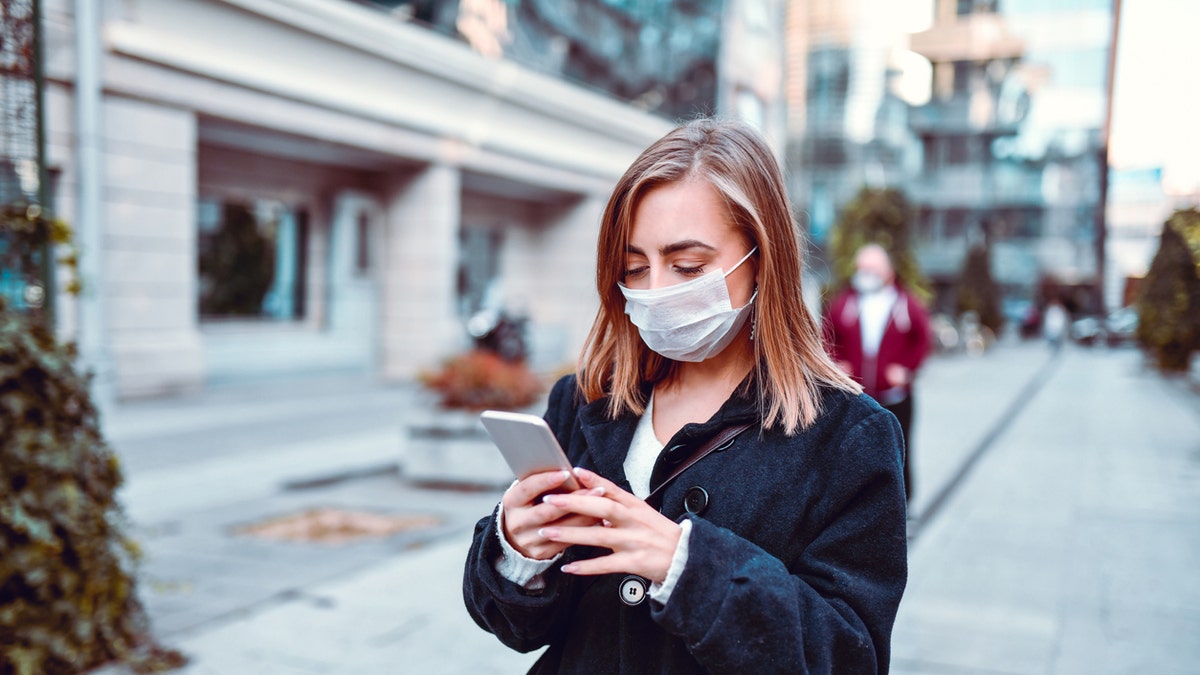Orthodox Jews in Brooklyn pushing back on coronavirus restrictions
New York City Orthodox Jews claim targeting by officials; reaction from Karol Markowicz, New York Post columnist.
While Americans increased their reported mask use between April and June, other mitigation measures dropped or saw little improvement, according to a report from the Centers for Disease Control and Prevention (CDC).
Younger people reported less mask use than older adults, per the data. A survey with 6,475 responses and nationally representative estimates found those aged 18-29 upped mask use from 69.6% in April to 86.1% by June.
Meanwhile, adults over 60 increased mask use from 83.7% in April to 92.4% by June.
However, other important measures like hand washing, social distancing and avoiding crowds decreased. The CDC recommends multiple mitigation tactics to most effectively reduce virus spread.

While Americans increased their reported mask use by June, other mitigation measures dropped or saw little improvement, according to the CDC. (iStock)
AMID CORONAVIRUS, 1 IN 4 AMERICANS ARE FAILING TO WASH THEIR HANDS: CDC
The U.S. is experiencing surges in cases, between 60,000 to 80,000 new reported infections daily, and some states in the Midwest are peaking in coronavirus-related hospitalizations. However, the CDC report stems from data up until June 8, at which point the country was seeing just over 20,000 new cases a day, according to data from Johns Hopkins University.
AVERAGE DAILY CORONAVIRUS CASES IN NORTH CAROLINA REACH NEW HIGH
Numerous experts told Fox News that, among other factors, the colder fall season is likely contributing to virus spread as people head indoors and face a much higher risk of transmission given limited air circulation and potential difficulty maintaining proper distance.
“We are entering a very dangerous time, where numbers of cases are rising dramatically, and younger Americans are potentially getting infected but not quarantining as they do not feel very ill,” Dr. Kristin Englund, infectious disease specialist at Cleveland Clinic, told Fox News. “This is the time to increase our education to the public about mask wearing to 100%, and to pay attention to other mitigation factors... to protect our older relatives and others who are most at risk.”

Health experts advise against inviting non-household members over, especially amid upcoming holidays, due to risk of virus spread. (iStock)
An expert at Johns Hopkins University said it's unclear whether the virus itself is truly seasonal.
“There is a seasonality to many respiratory infections, including influenza, for reasons we don’t fully understand. It’s too early to say whether COVID-19 will be seasonal, but if it is that may be adding to the current rise in cases and hospitalizations – underscoring the importance of redoubling our efforts to limit spread,” Stuart Ray, infectious disease expert at Johns Hopkins Medicine, wrote in an emailed statement.
COULD THE NOVEL CORONAVIRUS BECOME A SEASONAL VIRUS? NEW STUDY SUGGESTS YES -- BUT NOT YET
Other factors driving cases upward in the current climate may also include pandemic fatigue, opening up of indoor dining and bars, and students returning to schools, Dr. Dean Winslow, infectious disease physician at Stanford Health Care, pointed out.
The CDC urged a clearer understanding of barriers associated with less mask use among younger people and others.
“Reaching these groups through targeted channels, trusted leaders and influencers at national, state and local levels has the potential to improve use and effectiveness of critical public health strategies to protect persons of all ages by preventing the spread of SARS-CoV-2,” the agency suggested.
One doctor specifically pointed to social media in poorly influencing younger adults' decisions on virus mitigation. "There is still confusion in messaging or false information regarding the illness itself in social media, which may continue to influence decisions made by younger adults," Dr. Waleed Javaid, director of Infection Prevention and Control at Mount Sinai Downtown, wrote. "Clear cohesive messaging, backed by science and facts and conveyed via different sources, should be the way to go."

One doctor specifically pointed to social media in poorly influencing younger adults' decisions on virus mitigation. (iStock)
CLICK HERE FOR FULL CORONAVIRUS COVERAGE
On another note, the self-reported data in the CDC report has its limitations; some people might have falsified their answers and over projected mask use, experts noted.
“I am also cautious with self-reported data, particularly when there is a strong social desirability bias, meaning there is incentive for respondents to avoid giving answers that make them look or feel badly, and recall bias, in which we may for similar reasons have a distorted memory of events,” Dr. Lewis Nelson, professor and chair of the department of emergency medicine at Rutgers New Jersey Medical School, told Fox News.
Another limitation in the study was its rather vague survey questions, experts noted.
“This study doesn’t provide any detail regarding how, how frequently or how consistently masks are used. It simply asks if masks are part of someone’s strategy. If you wear your mask to the grocery store, but not when engaging in social activity with non-household contacts, you may still answer ‘yes’ on this survey, but that really doesn’t tell us anything very useful,” Dr. Iahn Gonsenhauser, chief quality and patient safety officer at The Ohio State University Wexner Medical Center, wrote to Fox News.
Nevertheless, the experts emphasized the importance of consistent, correct mask use (covering the mouth and nose); “Bottom line: we know masks work and there are mountains of evidence that prove it,” Gonsenhauser added.

When a mask is worn correctly, it covers the nose and mouth, with a snug fit around the face, the CDC says. (iStock)
CLUSTER OF CORONAVIRUS CASES AMONG COLLEGE'S SOCCER TEAMS HIGHLIGHTS MITIGATION CHALLENGES: CDC
Dr. David Hirschwerk, an infectious disease specialist at Northwell Health in New Hyde Park, N.Y., also touted masks.
“While we are in bad shape now with disease spread, even with the use of masks, we would be much worse off if mask use diminished,” Hirschwerk wrote. “...This virus is vicious in its ability to exploit lack of consistent adherence to mask-wearing as well as other lapses in adherence to mitigation factors.”
Increased mask use across ages is a step in the right direction, says Dr. Nicole Iovine, chief epidemiologist at University of Florida Health Shands Hospital.
“It remains concerning, however, that the 18-29 age group has the lowest level of engagement in masking as well as the other mitigating behaviors,” she said.
Gonsenhauser, with the Ohio State University Wexner Medical Center, added that younger people have historically been more difficult to engage with respect to public health crises.
“This is the generation that we have all come to know as the ‘activist generation’ however, so our hope is that they realize that their precautions aren’t just about them, but their families, friends and communities and the fact that their personal practices can potentially have a major impact on someone else’s life,” Gonsenhauser wrote.

